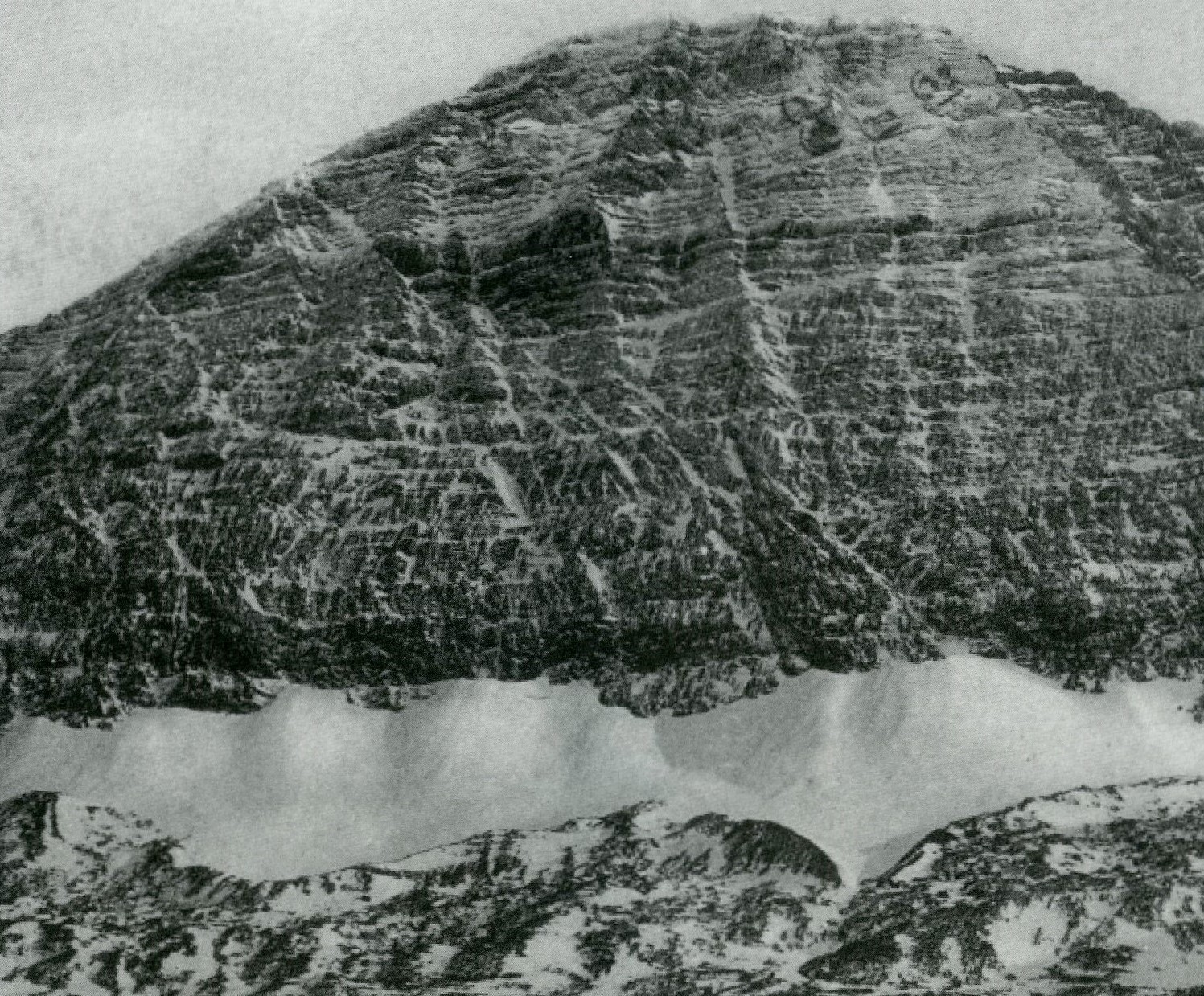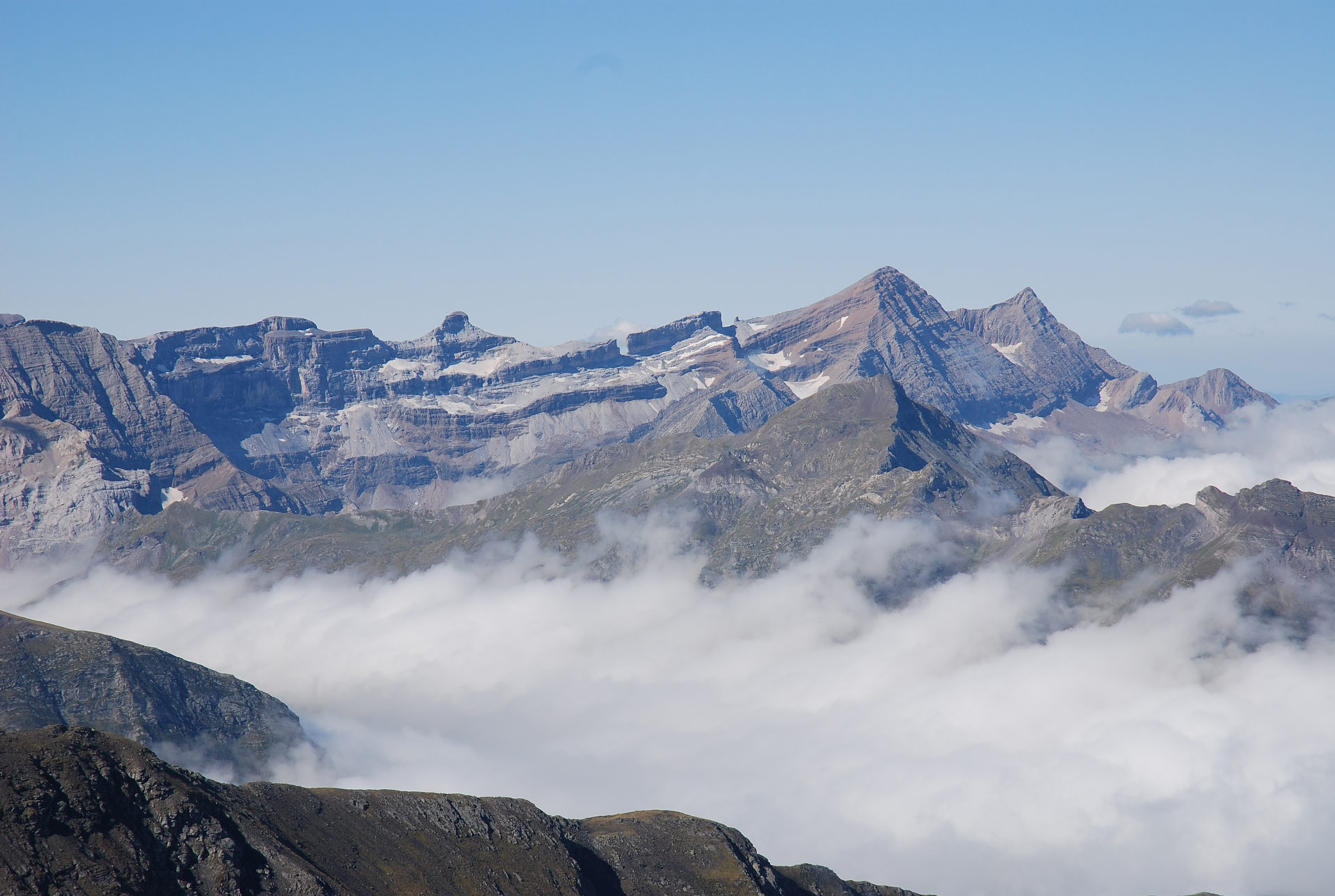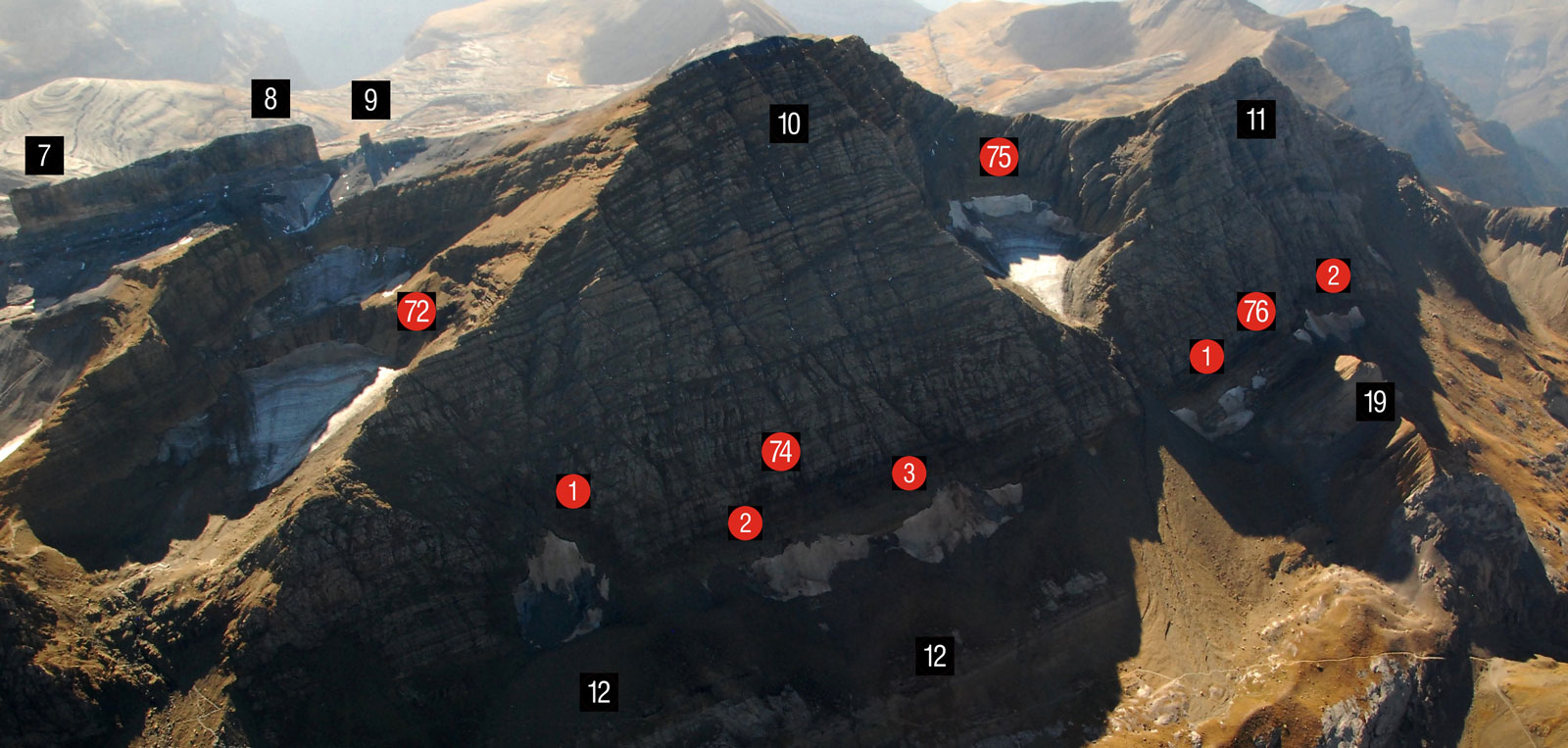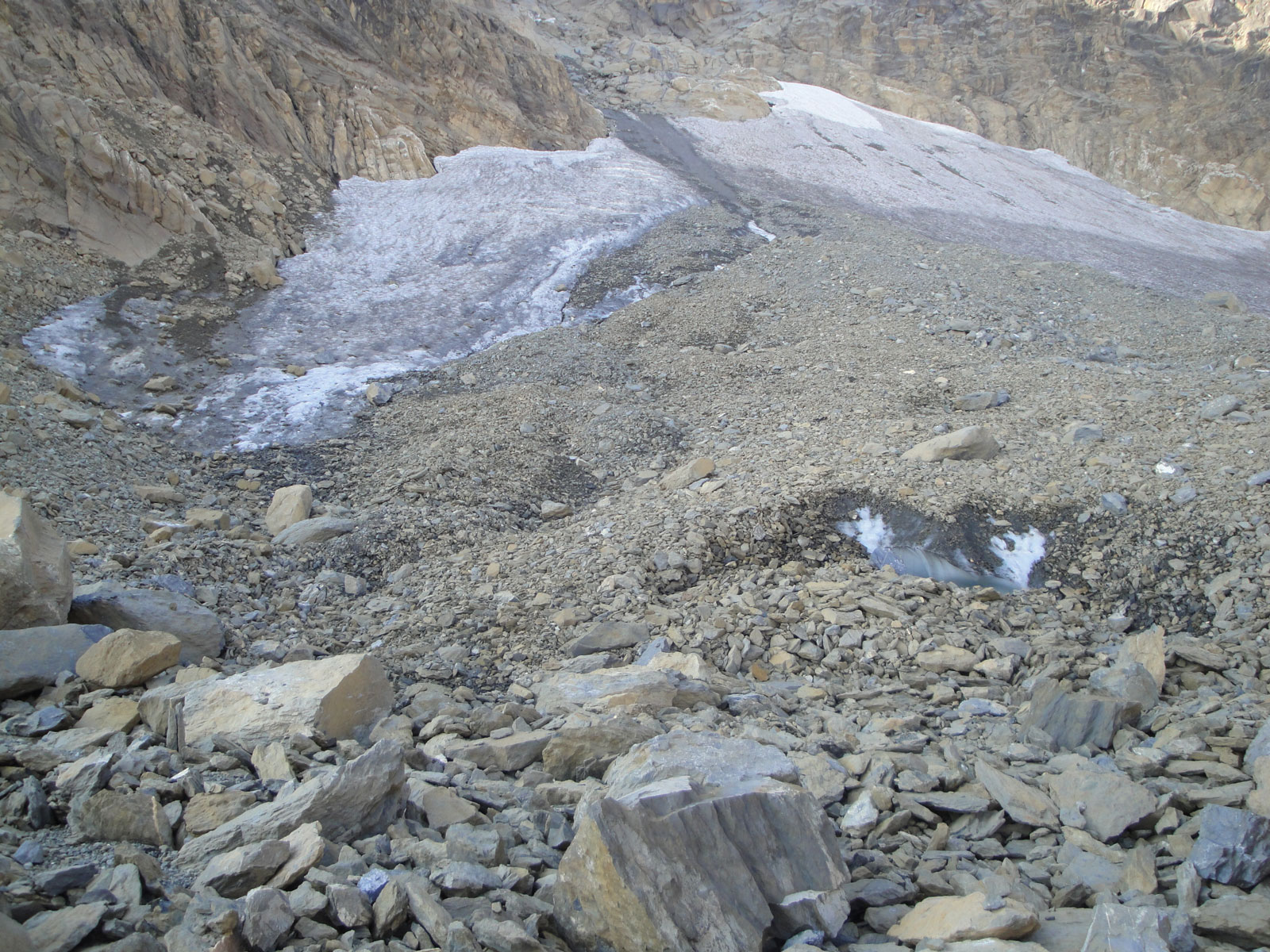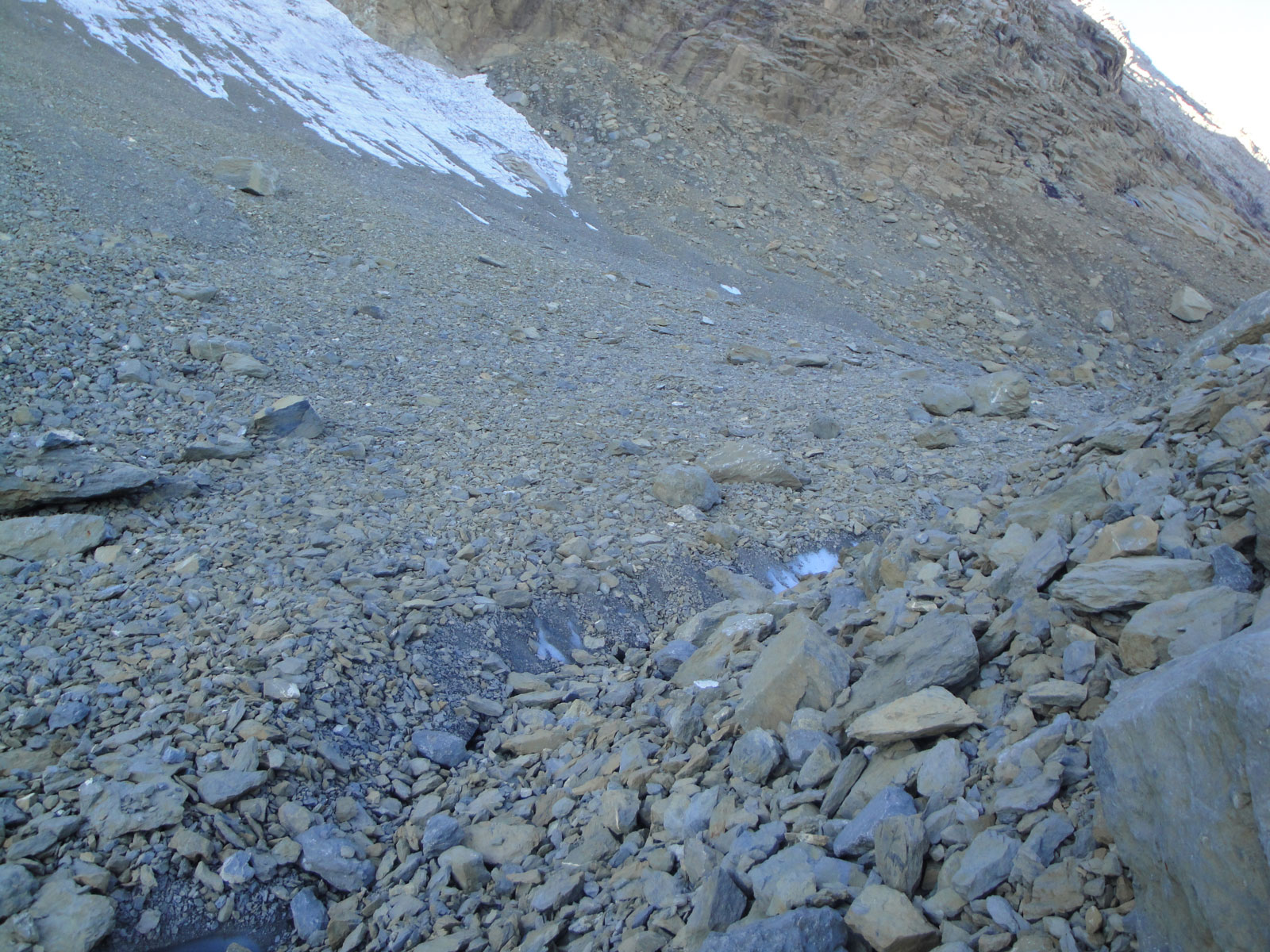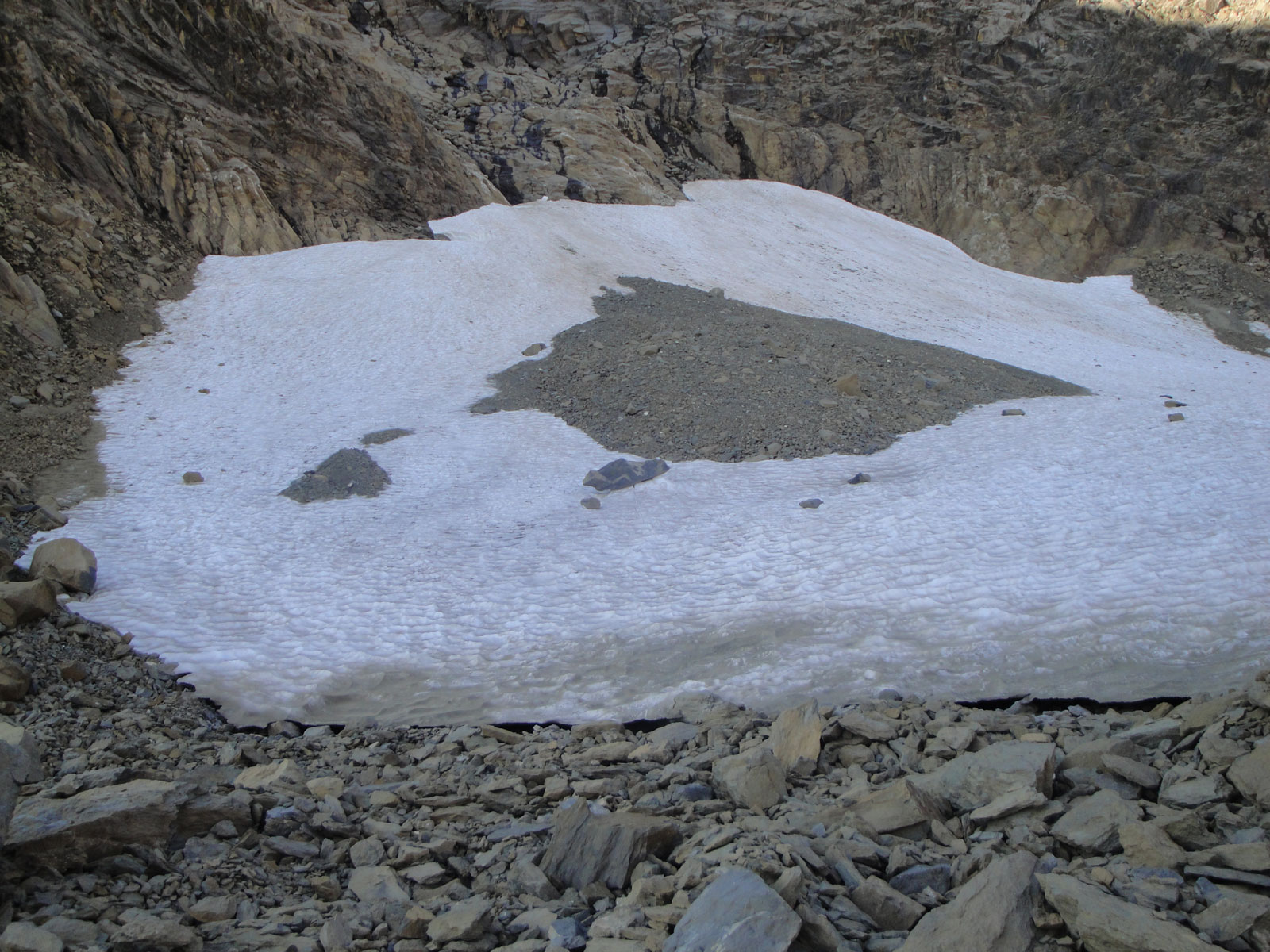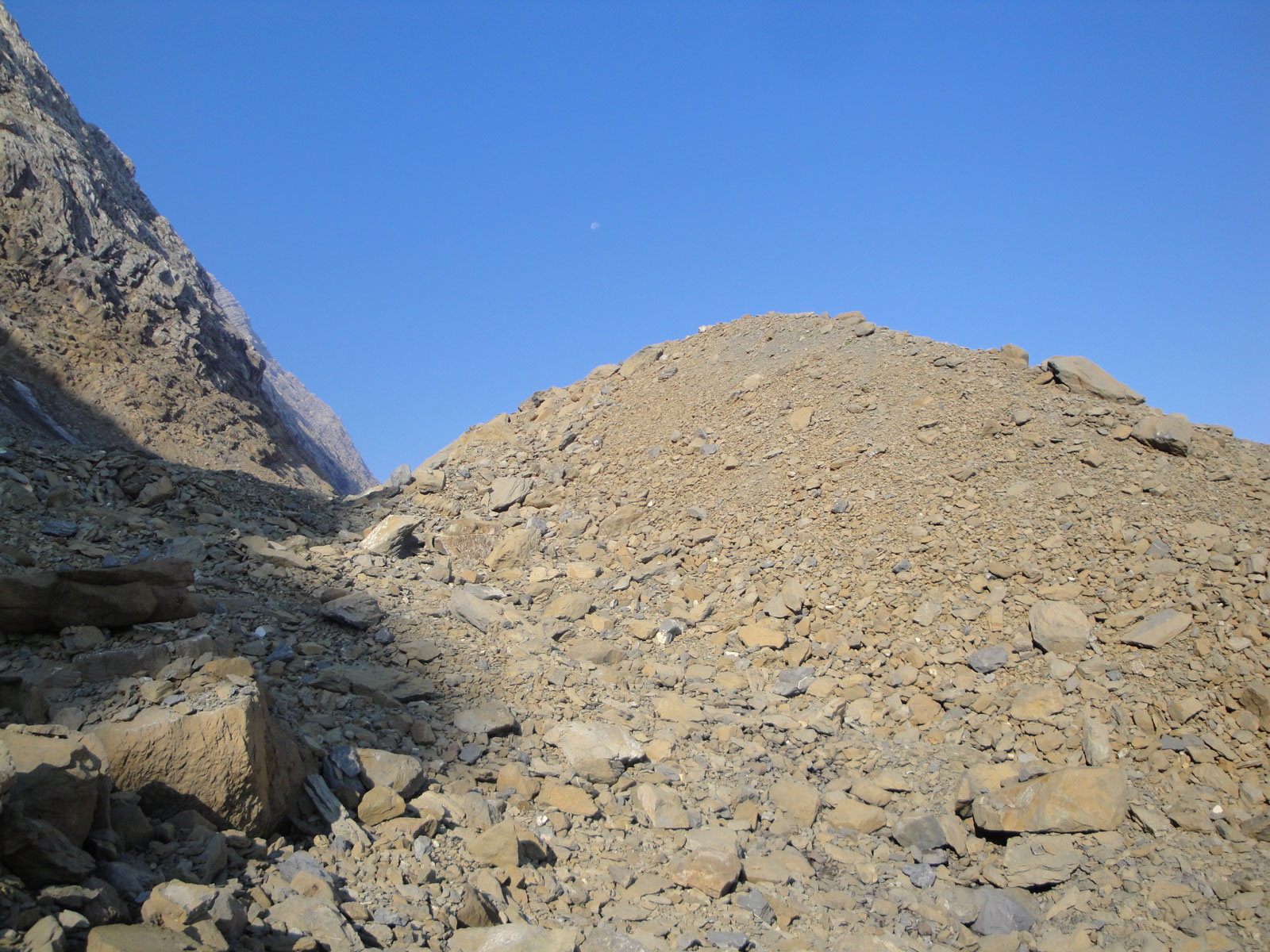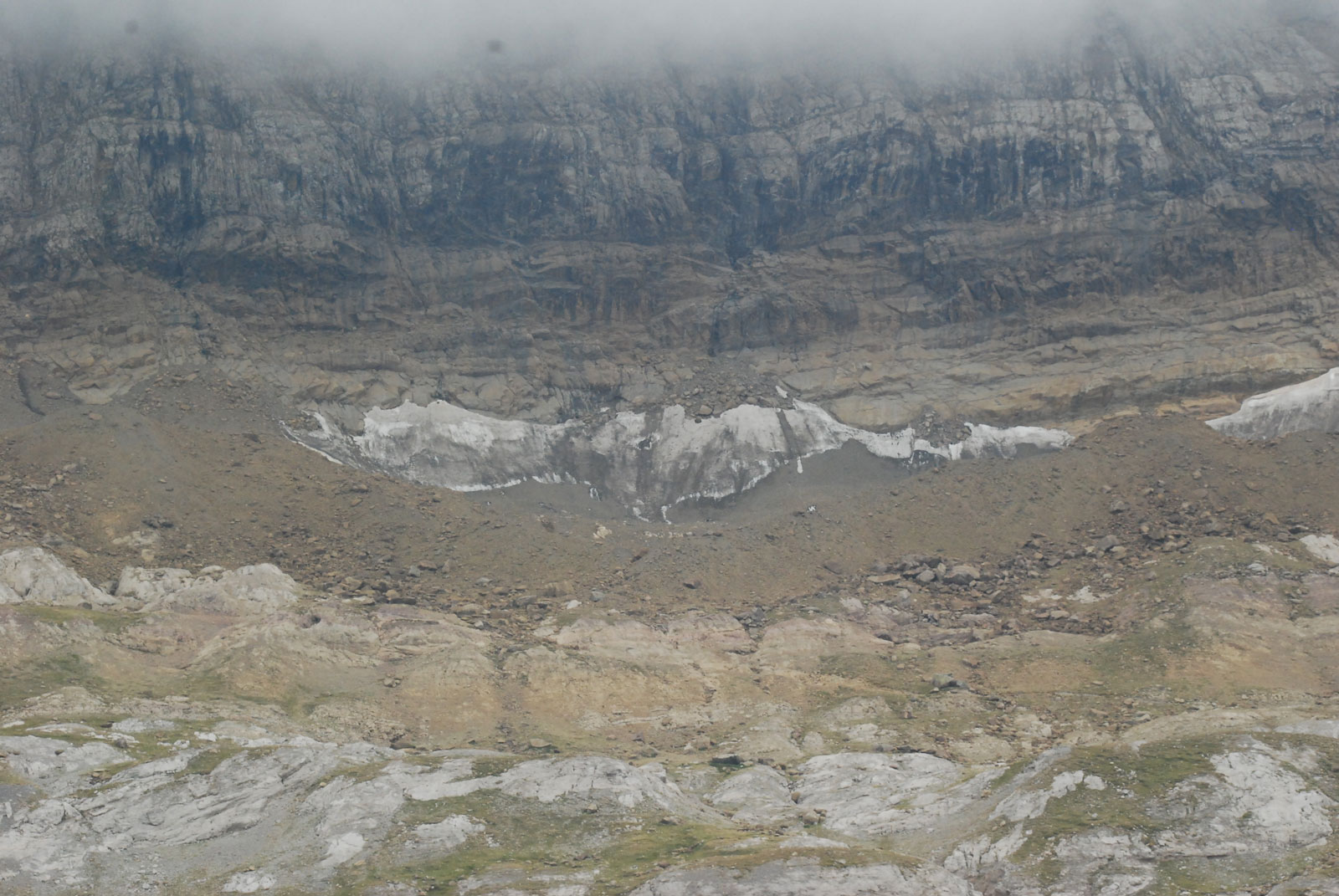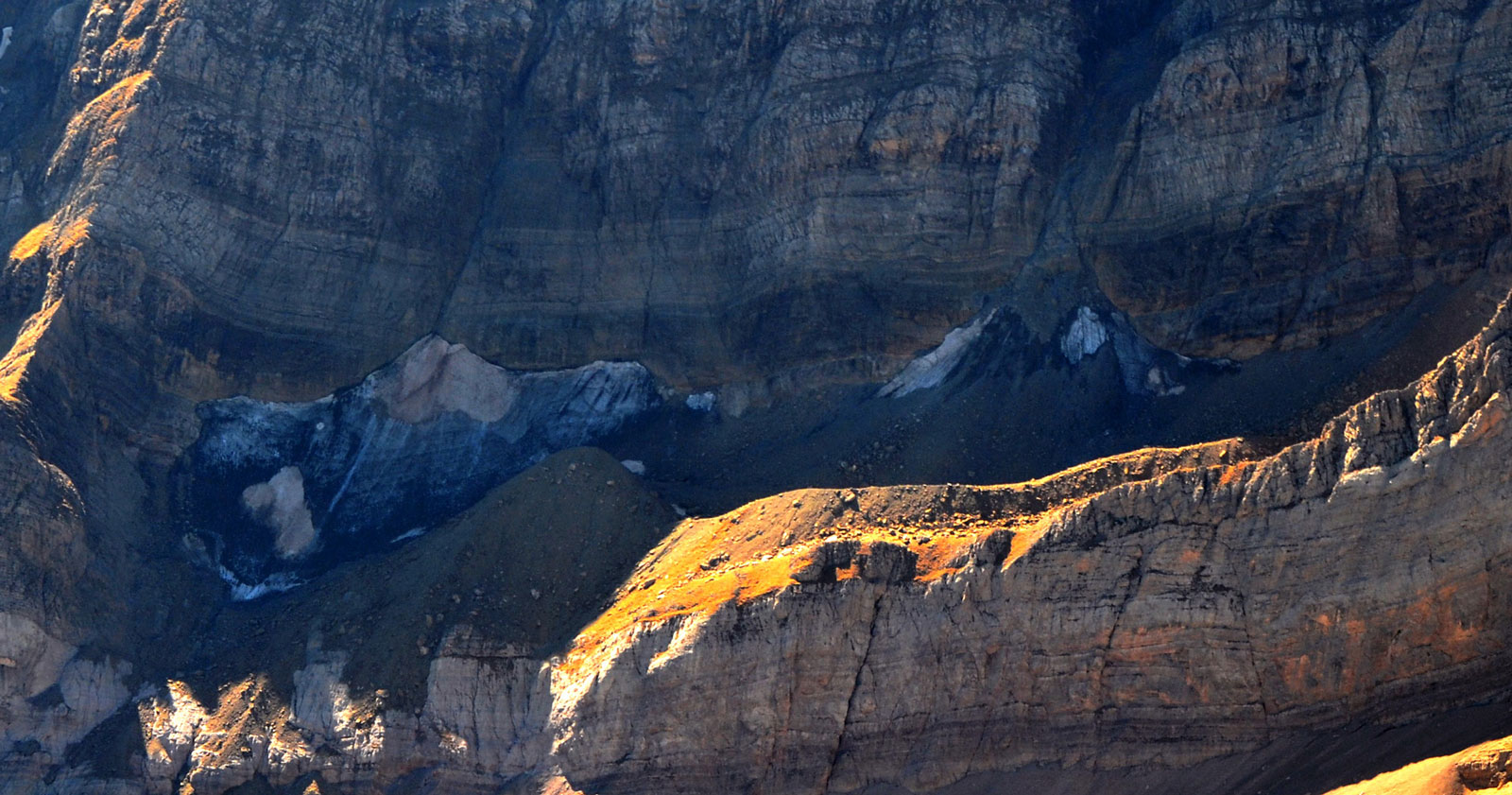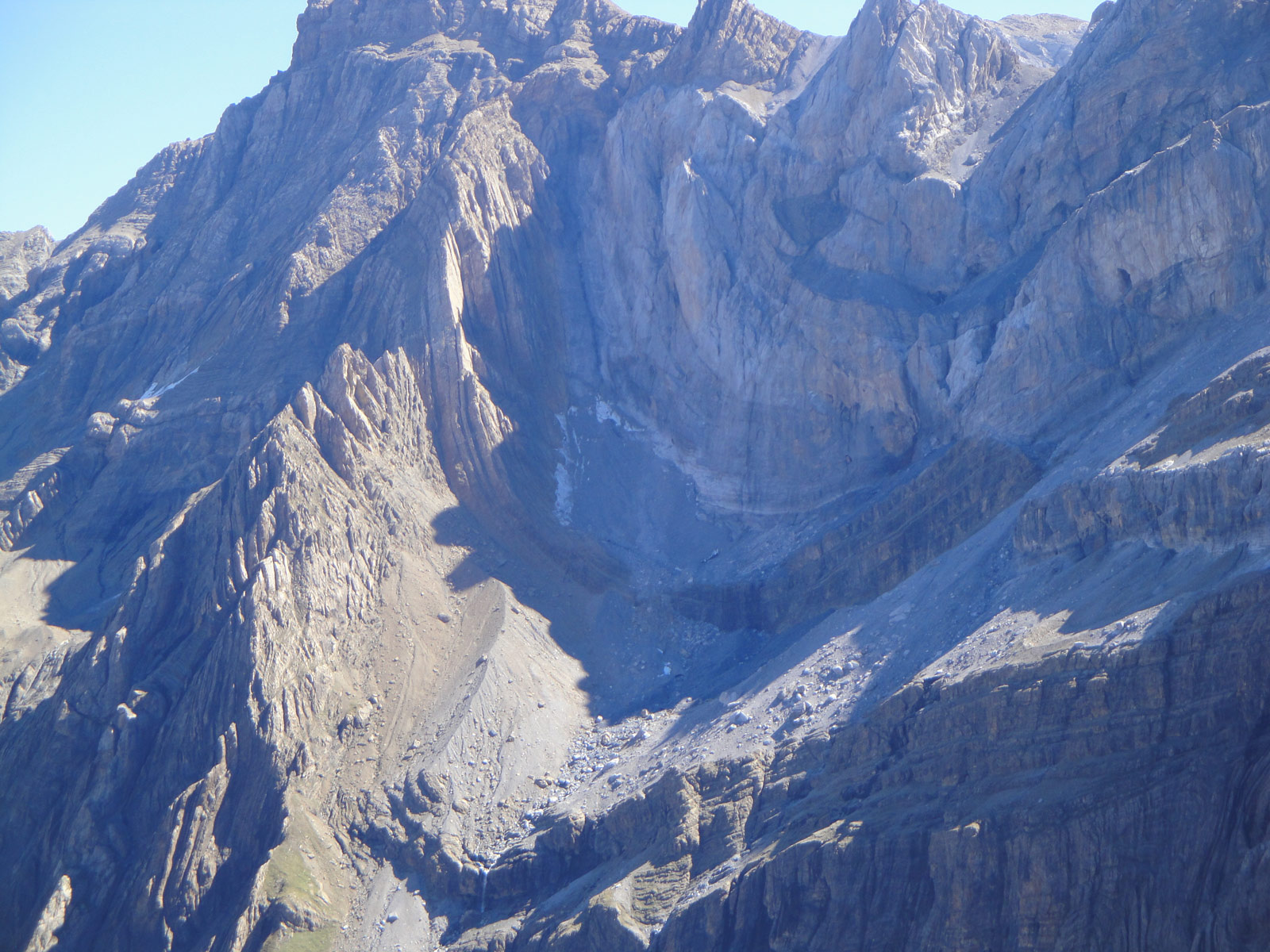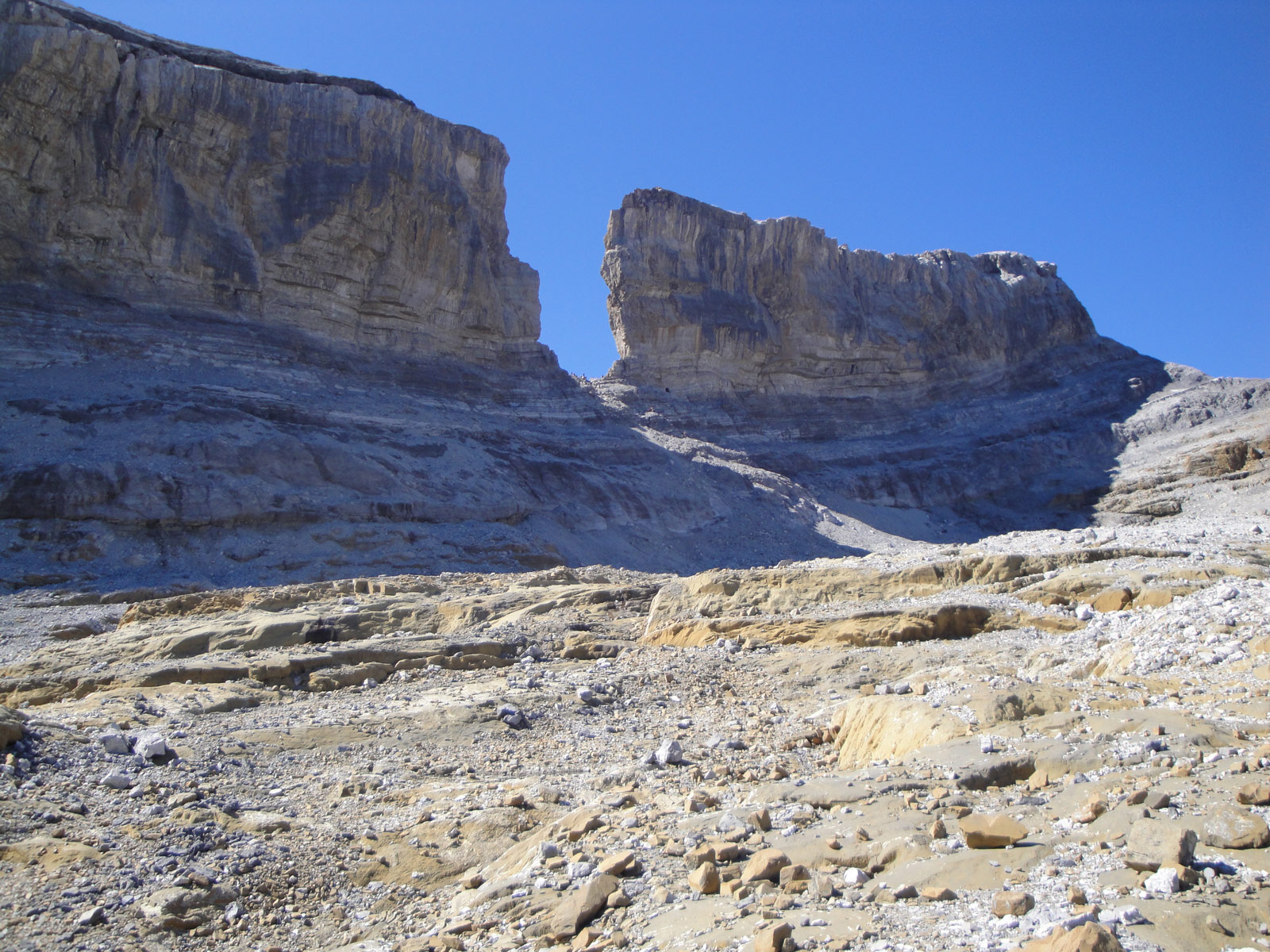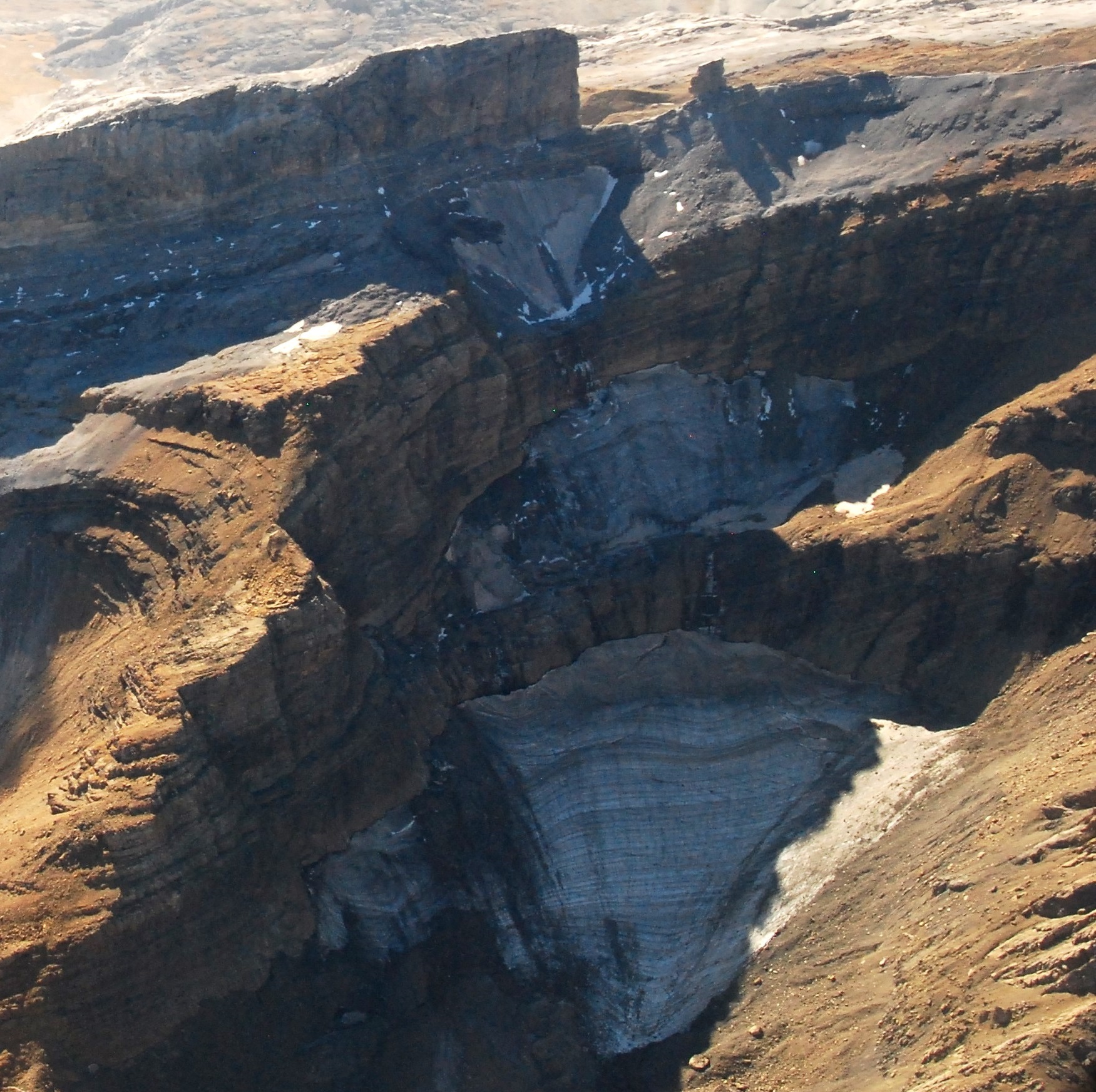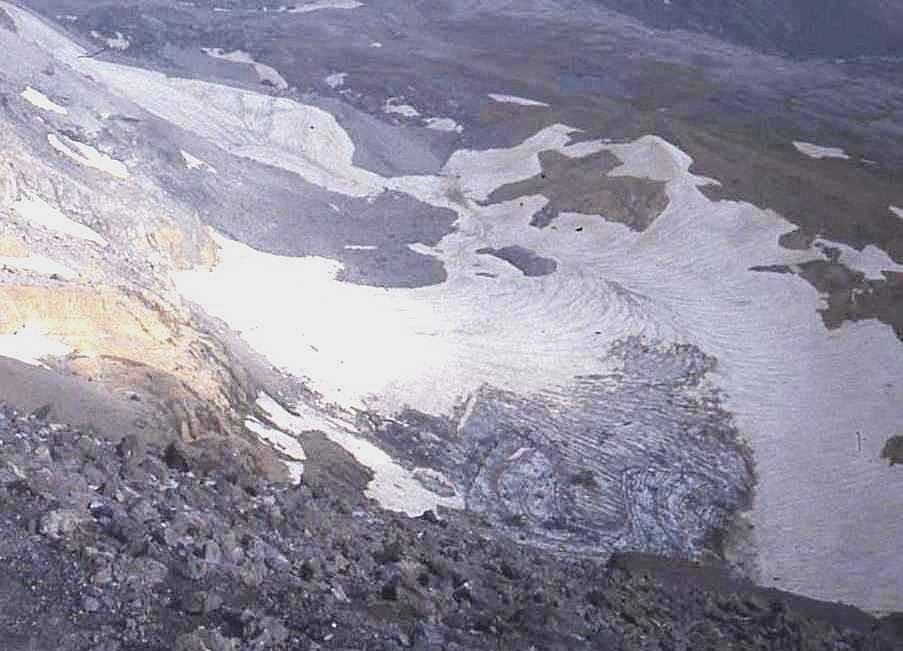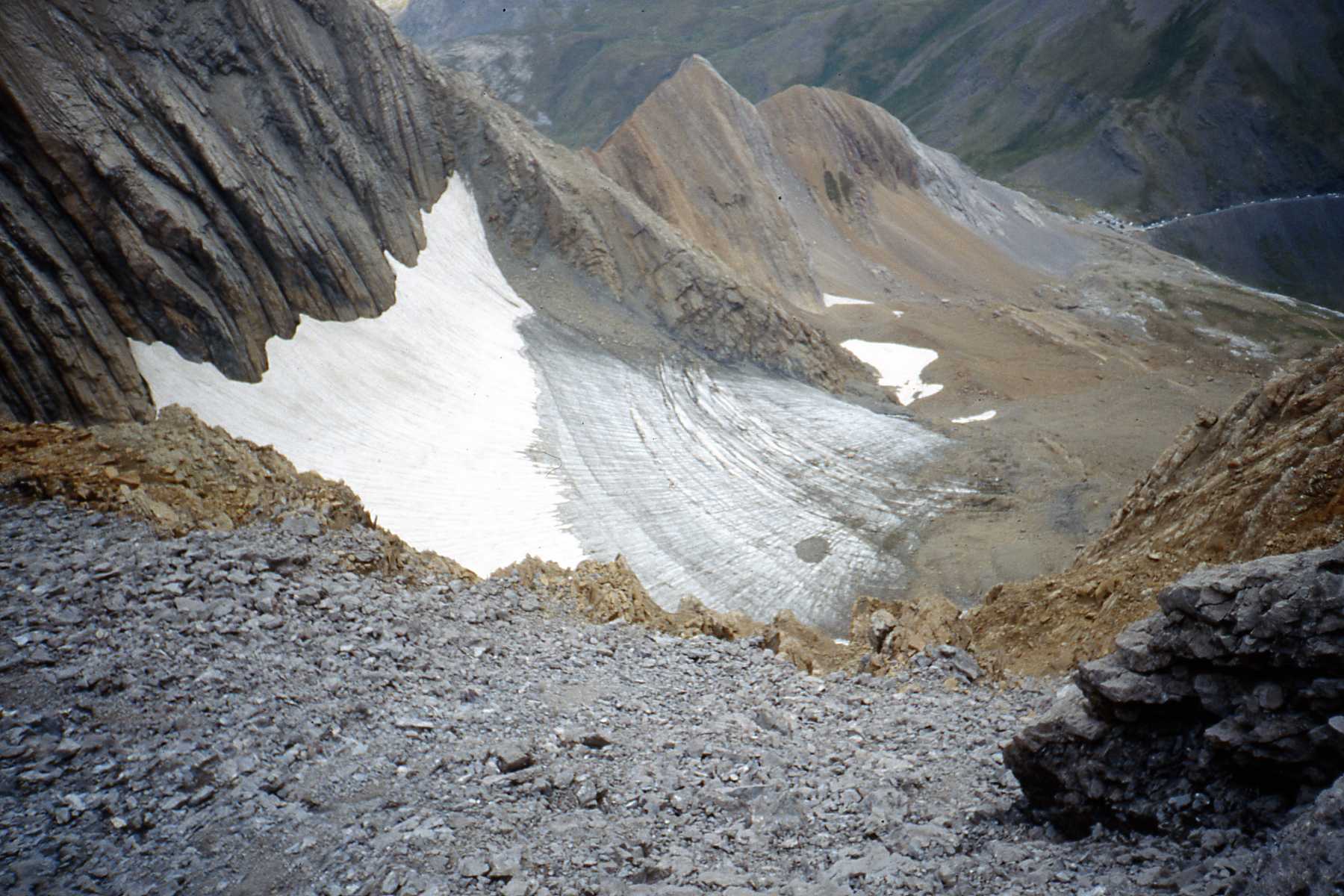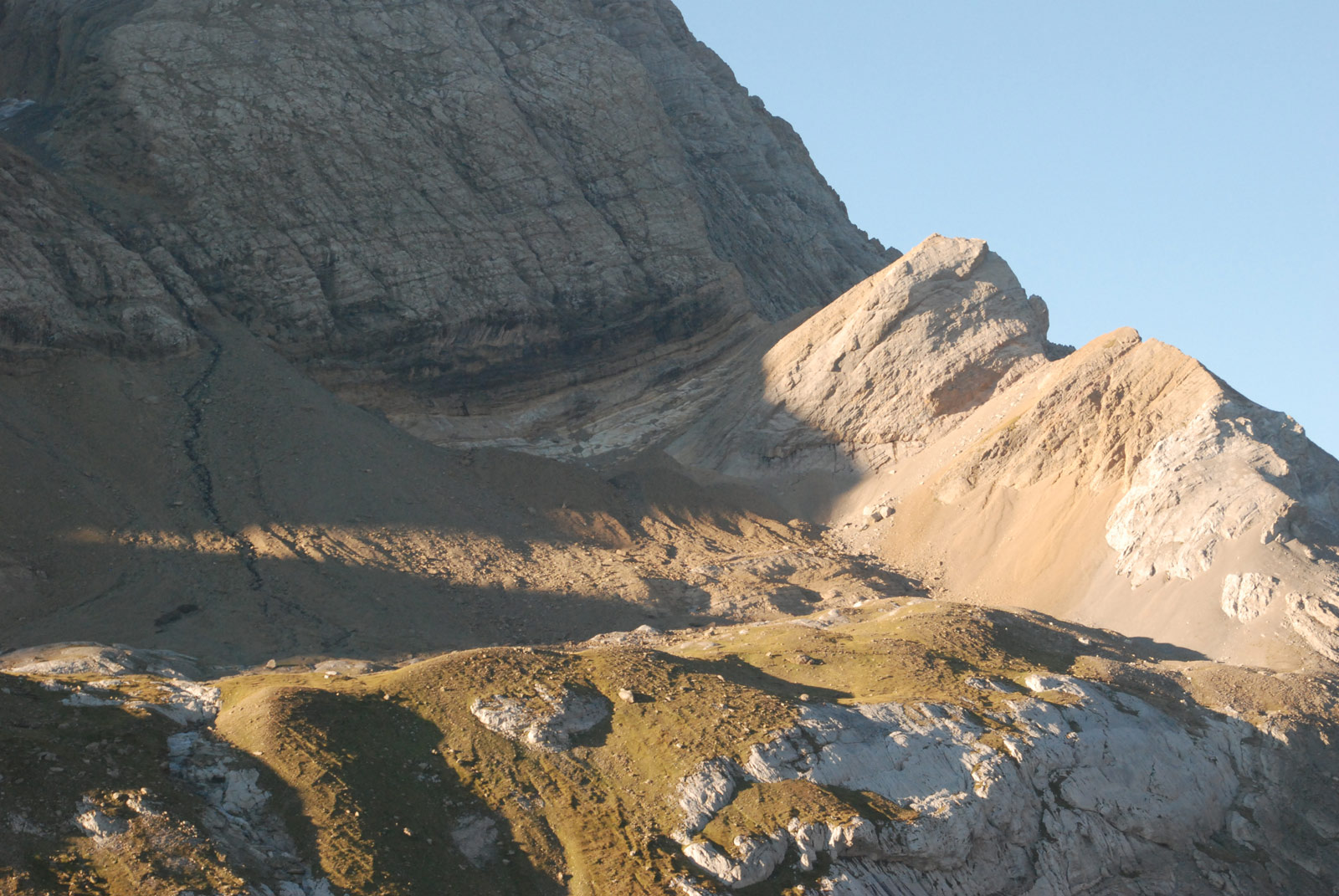A consistent moraine more than 1 km wide at the base of the extensive northern slope of Pico Taillón, between the northeast and northwest ridges, shows the existence of an ancient glacier of short length but with a powerful horizontal development. It is estimated that during the Little Ice Age it could have reached an area of 15 ha, ranking 10th in terms of headwater width. Between 1982 and 1985 it was split into three units (74-1-2-3). Its powerful moraine kept it largely hidden from view, remote and out of the way of most observations. In the eastern fragment (74-1), faint cracks were last seen in 2012 in the upper sector at the point where it received the maximum accumulation of snow from the north-western ridge of Taillón. Most of its surface was already covered by erosion material, taking on the morphology of a black snowfield. In 2017, only the ice in its upper sector was visible. Five years later, it still retained a minimal thickness of ice and was classified as extinct in 2023. A snowfield still occupies its former location and the possibility of ice fragments buried under the debris cannot be ruled out. The fragments of the central (74-2) and western (74-3) snowfields remained as residual features until their total extinction in 2023.
Este aparato glaciar pertenece al siguiente macizo:

